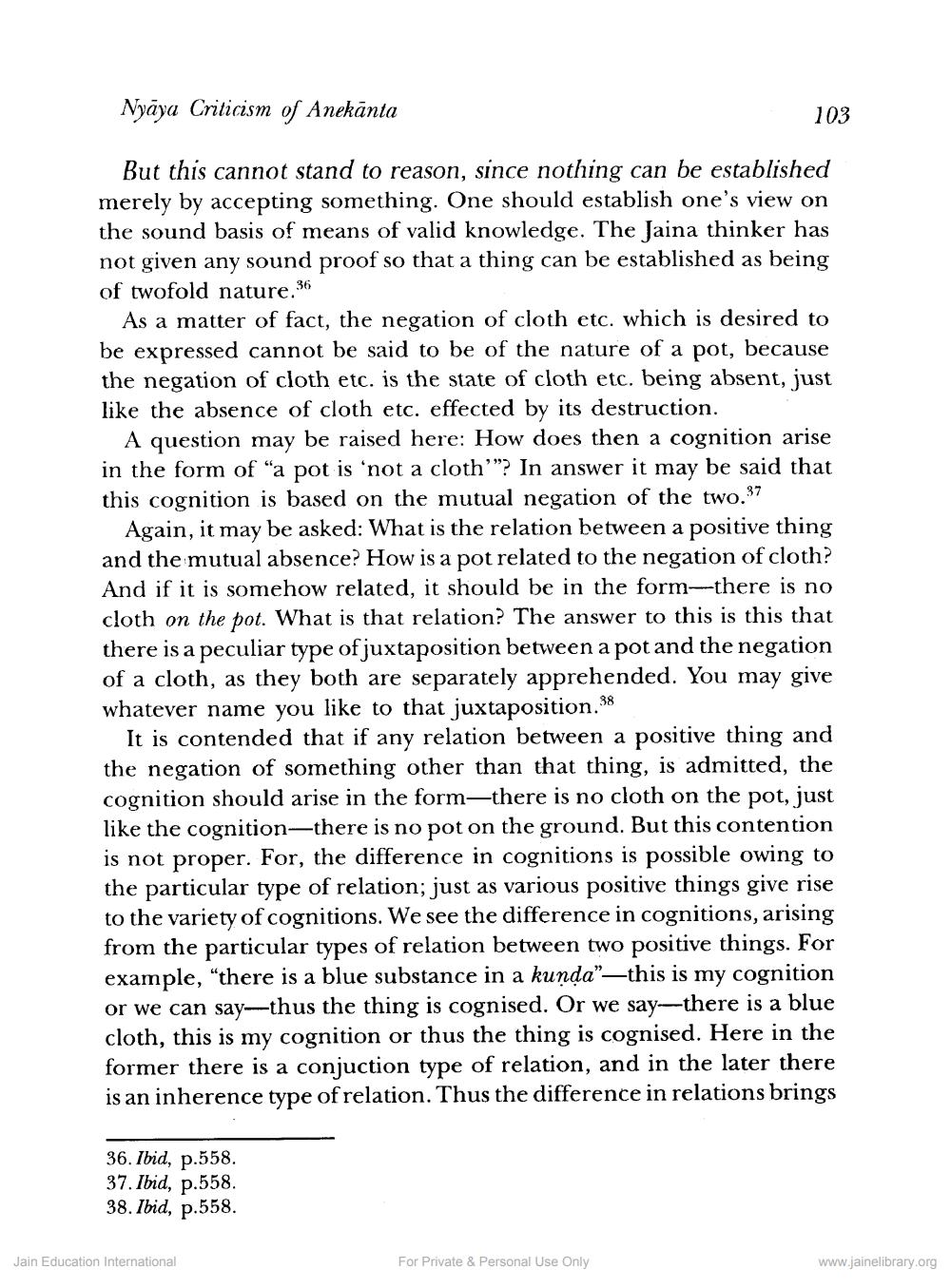________________
Nyāya Criticism of Anekānta
103
But this cannot stand to reason, since nothing can be established merely by accepting something. One should establish one's view on the sound basis of means of valid knowledge. The Jaina thinker has not given any sound proof so that a thing can be established as being of twofold nature. 36
As a matter of fact, the negation of cloth etc. which is desired to be expressed cannot be said to be of the nature of a pot, because the negation of cloth etc. is the state of cloth etc. being absent, just like the absence of cloth etc. effected by its destruction.
A question may be raised here: How does then a cognition arise in the form of "a pot is ‘not a cloth'"? In answer it may be said that this cognition is based on the mutual negation of the two."
Again, it may be asked: What is the relation between a positive thing and the mutual absence? How is a pot related to the negation of cloth? And if it is somehow related, it should be in the form--there is no cloth on the pot. What is that relation? The answer to this is this that there is a peculiar type of juxtaposition between a pot and the negation of a cloth, as they both are separately apprehended. You may give whatever name you like to that juxtaposition.38
It is contended that if any relation between a positive thing and the negation of something other than that thing, is admitted, the cognition should arise in the form—there is no cloth on the pot, just like the cognition—there is no pot on the ground. But this contention is not proper. For, the difference in cognitions is possible owing to the particular type of relation; just as various positive things give rise to the variety of cognitions. We see the difference in cognitions, arising from the particular types of relation between two positive things. For example, "there is a blue substance in a kunda"—this is my cognition or we can say—thus the thing is cognised. Or we say-- there is a blue cloth, this is my cognition or thus the thing is cognised. Here in the former there is a conjuction type of relation, and in the later there is an inherence type of relation. Thus the difference in relations brings
36. Ibid, p.558. 37. Ibid, p.558. 38. Ibid, p.558.
Jain Education International
For Private & Personal Use Only
www.jainelibrary.org




